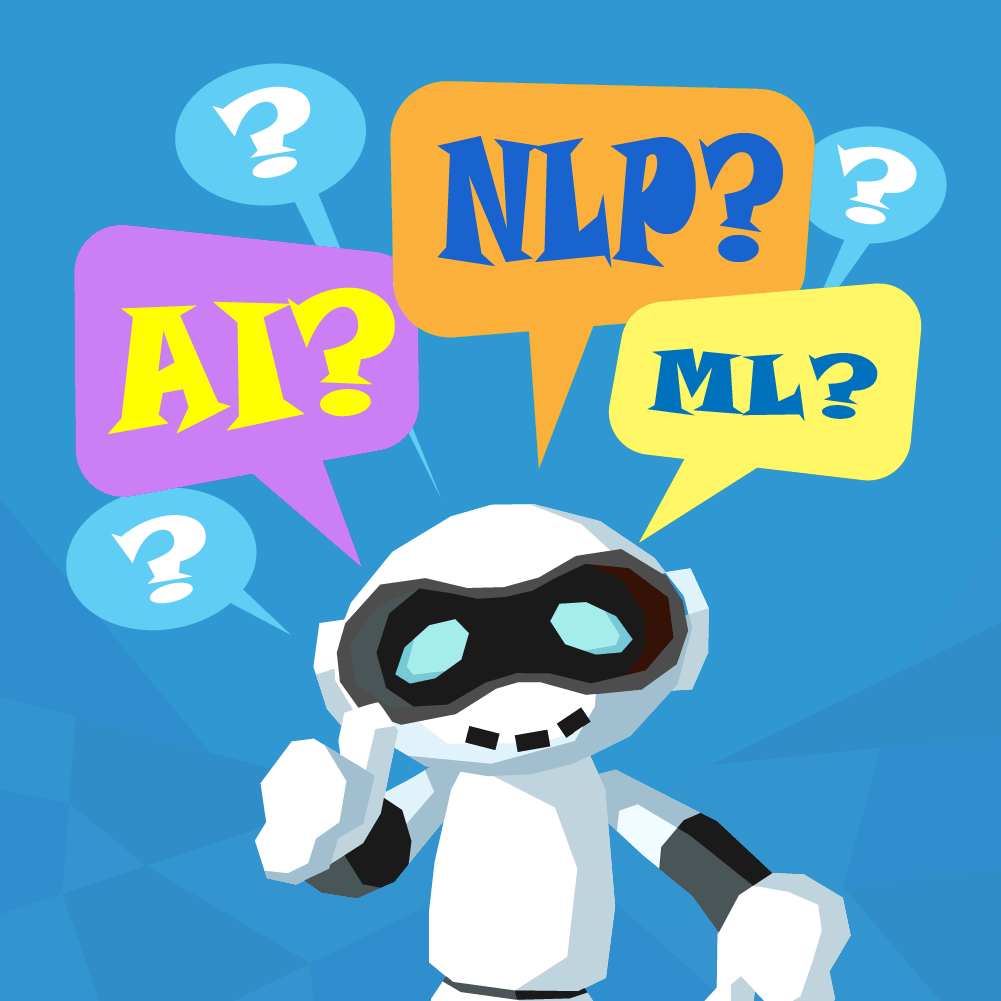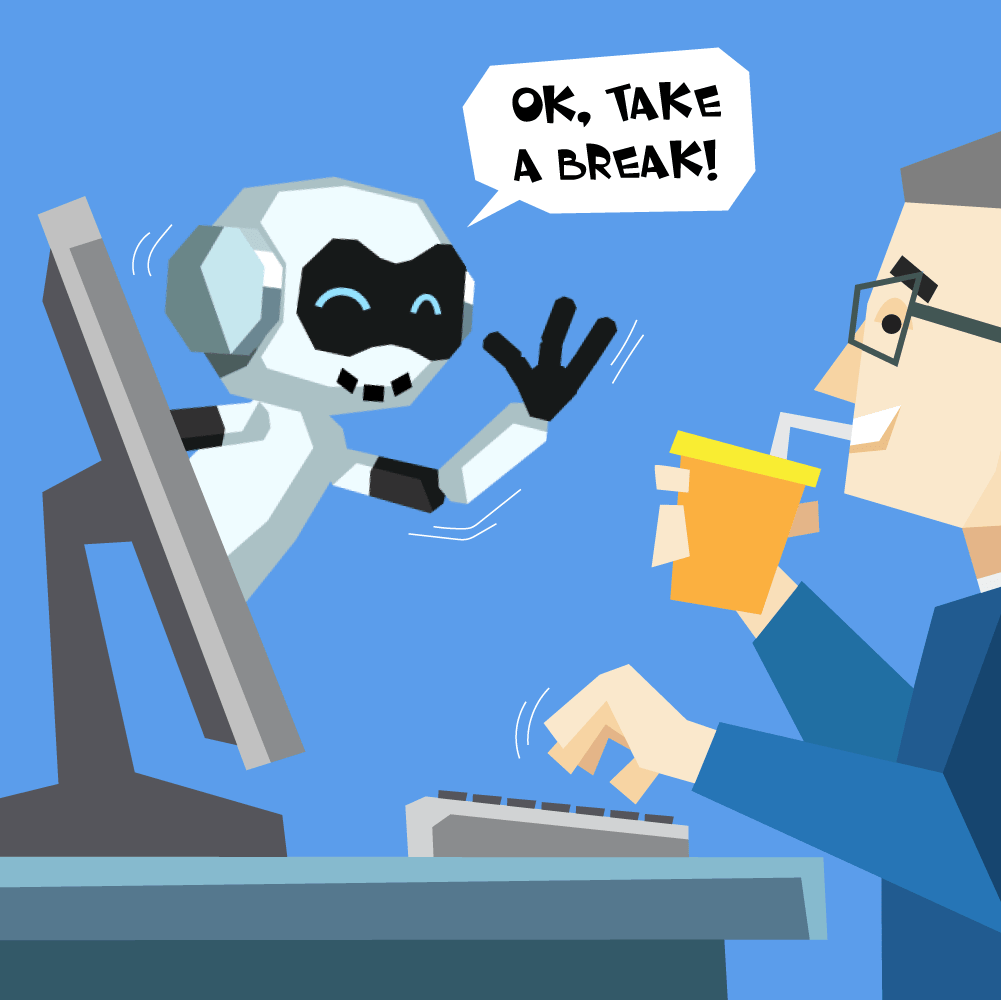A Revolution in Chatbot Structure: Conversational UI
 The modern, digital global ecosystem of SMBs – and larger enterprises – has been radically transformed in recent years by the advent of new technologies.
The modern, digital global ecosystem of SMBs – and larger enterprises – has been radically transformed in recent years by the advent of new technologies.
As technology has rapidly advanced, new systems have given businesses the opportunity to alter their business model, increase their margin and bottom line, while reducing overhead and effectively increasing operational and workflow efficiency.
From email communications, to desktop workstations, to broadband internet, to tablets, smartphones, cloud infrastructures, enterprise IT suites (e.g. ERP/CRM), advanced networks, the Internet of Things (IoT), Blockchain technology, Big Data, and Artificial Intelligence, technology has allowed SMBs to significantly better their business practices.
One of the more critical advances in modern technology is the advent of robotic systems. The adoption of robotic systems equates with enhanced workflow automation, which allows businesses to save money and decrease project life cycle timelines, due to robot systems’ innate ability to quickly and efficiently carry out a myriad of operations in a short amount of time.
While hardware robotic systems are used in a variety of industries, software robots (or bots) – programs that efficiently automate critical business operations – have transformed how customers interact with brands across the board. Along with robotics, the fields of Artificial Intelligence (AI) and Machine Learning (ML), have altered how businesses, data scientists, analysts, and enterprises operate on a global scale.
Artificial Intelligence is the use of computer programs to simulate human intelligence, including carrying out important business operations that a human would otherwise be responsible for. Machine Learning is an advanced branch of AI where programs are able to rewrite their own algorithms and “learn” based on experience (acquired data), giving them the ability to carry out more efficient future operations (based on their “learning”) that they were not explicitly programmed for.
One form of software automation, which combines AI with robotics, is with software “bots” known as chatbots. Chatbots are AI systems that operate as personal assistants, and allow for customers/end-users to interact with a business’s systems in a whole new way.
The modern age has brought about a digital revolution associated with humanless interaction, allowing customers to communicate directly with an enterprise’s backend systems. Chatbots allow end-users to interact with a system using a simple interface, without the need for complicated computer syntax.
Interactions can include asking a bot for the nearest restaurant, asking a bot about the weather, or asking a bot for a specific news story. Such chatbot systems allow for a more streamlined and efficient operation, all without the use of multiple apps, since chatbots are baked into already-developed applications.
While almost every industry can take advantage of chatbot software in a variety of ways to enhance the customer experience, four major ways in which a chatbot can benefit an organization is with the following:
- Marketing: Automated AI/ML-based ChatBots can be integrated with CRM, ERP, etc. to learn about the preferences of customers and link that data with enterprise software systems, which can ultimately be used to enhance the customer experience. Utilization of AI/ML-based Chatbots can result in higher margins, lower churn rates, more pertinent and focused user marketing campaigns, etc. while allowing businesses to save money and lower the overall Customer Acquisition Cost (CAC). Overall, chatbot systems typically result in a very positive ROI and increased bottom line.
- Messaging: The most used apps today are messaging apps, which reveals how customers communicate with other end-users and with businesses. As businesses increasingly utilize inbound marketing and attain an online presence – along with utilizing social media for marketing and sales – certain social/messaging platforms, such as Facebook/Messenger and Slack, are critical platforms where businesses can leverage chatbots to automate customer service, and marketing/sales operations, all in an efficient, automated, feasible way.
- Customer Service: As chatbots often work as personal assistants, customer service representatives can often be wholly, or partly, replaced by chatbots. Such bots can answer a variety of common questions, and, with Machine Learning, can be designed to learn and better understand the needs of customers based on prior interactions.
- Orders/Sales: Chatbots can be used to deliver products and to convert leads/prospects into customers (via the completion of a sale), in the same manner as a sales representative.
Essentially, chatbots/AI give businesses and end-users robust solutions that streamline and enhance the customer experience while allowing enterprises to save money, reduce overhead, and increase operational efficiencies. In order for such interactions to take place, however, there must be an effective system for a human and a computer system/bot to communicate. Historically, computers do not understand human languages, and thus communication between a human and a computer system required the usage of complicated computer syntax. While human-computer interactions have evolved over time, the use of NLP (Natural Language Programming), among other systems, allows computers to understand – and respond with – natural, human languages, such as English. The system by which a chatbot interacts with a human is often called the next “big thing” in IT – Conversational UI.
Conversational UI is the platform by which a human interacts and communicates with a computer system, in order to allow the end-user to tell the computer what to do, all via voice or human-language text messages. Put another way, conversational UI can be thought of as a type of AI chatbot communication/interaction system via text messages or voice commands, allowing humans to interact with computer systems (and vice versa) via the use of simple, human language phrases, in order to get a desired response. This can ultimately be used to radically alter not only application User-Interfaces (UIs) and overly complicated menus, but to allow businesses to automate customer service workflows, and spending less money on hiring, training, and retaining customer service representatives.
When it comes to business apps, messaging platforms and marketing/sales systems, chatbots usually work via a conversational UI (i.e. chatting with the end-user). Thus, chatbots allow for complete integration with apps and processes so users can seamlessly carry out a process with minimal app-switching and/or actions, all via a Conversational UI-based chatbot assistant. This gives customers the opportunity to have a better way to interact with brands, which ultimately improves the customer experience, and helps businesses to save money and reduce overhead.
Short History of Conversational Interfaces
As noted above, the conversational interface between a computer system and a human, which dictates the interactions between the two, has evolved greatly, and originally required the usage of computer languages in order to get computer systems to do as a human desired. This meant using a variety of low-level programming languages, which evolved to higher level scripting languages, such as UNIX bash shell scripting. The method of such interactions evolved from the use of a standard keyboard, to the use of a computer mouse, touch-screen interface, and now, to voice commands (with regard to voice-based AI/chatbot systems, such as voice assistants).
The Command-Line
Initially, UNIX and DOS-based computer systems required the use of a command-line interface (CLI), necessitating certain syntax to be used in order for the computer system to understand a human’s desires and needs. Such a system required extensive knowledge on different CLIs in order for a human to interact with the computer system effectively and efficiently, and was mainly geared towards computer professionals, and not the general layman.
Graphical User Interfaces
The evolution of the CLI resulted in a myriad of graphical user interfaces (GUIs), which allowed users to interact with a computer system via graphical objects, icons, tabs, etc. along with a point-and-click (or touch-based) system. GUIs did not typically require knowledge of computer syntax (directly), while all human-language based commands were “compiled” (or translated) into machine code. This type of system opened up computer usage to non-computer professionals.
Internet Relay Chat
IRC is an internet-based, peer-to-peer chat system that allowed humans to interact with each other through a variety of computer/network-based systems and apps, which utilized a variety of different syntax patterns and commands for communication/interactions.
Messaging Apps
The advent of social media, messaging apps – such as Facebook Messenger, WhatsApp, Viber, LINE, etc. – allowed end-users to communicate with other users via a simple, graphical interface, which typically utilized a point-and-click, or touch, interface for communication and interaction with the app/system.
Aspects of a Great Conversational UI?
A true conversational UI system will allow two critical aspects of communication (voice and text) via two types of chatbots – Voice Assistance chatbots and Text-based chatbots. Additionally, conversational UIs must be able to understand the needs of a person based on their inputted words/phrases (whether it be via voice or text), and must be able to respond appropriately in the same human language.
That said, it is also important to understand that, in order for an AI chatbot system to be leveraged efficiently, understanding the needs of the end-user is paramount. This means feeding the AI chatbot with a very large amount of data in order for it to be “trained,” which allows it to better understand customer needs.
Additionally, as noted by Google, a great conversational UI system should apply the Cooperative Principle (including the four aspects of Grice’s Maxims), and should use variation, turn-taking, threading, etc. [1].
Turn-Taking
In conversational UI, turn-taking is utilizing cues (i.e. facial expressions, intonation, tone, etc.) to understand whose turn it is to speak. This requires a bot that fully understands the crucial aspects of conversation and linguistics, including when statements are made rhetorically, and/or when questions need to be answered, etc.
Threading
Natural conversations have inter-woven themes that act as multi-dimensional threads within the overarching conversation. Such “themes” can be nouns or events spoken about that the bot should effectively understand, in order to build on them in the conversation. Effective conversational UIs/chatbots, thus, are able to understand the inter-woven themes that act as threads in a conversation to better and more effectively communicate with the end-user.
Leveraging the Inherent Efficiency of Language
Human languages offer the most precise communication tools in existence, especially when compared to computer languages. The ability to directly communicate with a computer system via NLP (or another type of system, such as CI) allows customers to operate with a level of efficiency that was not possible with shell scripting, UNIX syntax, etc. However, in order for this increased efficiency to be utilized and leveraged, chatbot systems and conversational UI platforms must be designed correctly, and with the correct principles and concepts in mind.
Anticipating Variable User Behavior
In this data-driven world, conversational UIs/chatbots can be leveraged in order to better understand the needs of customers, which can further enhance the customer experience in future interactions – all based on past customer-chatbot interactions. There are a massive amount of user behavior variables that companies must take into account when attempting to understand their leads, prospects and customers. This includes data about the mindset of the potential buyer, their frequency of shopping, the services they like and/or dislike, etc. The utilization of AI/chatbots and Big Data analysis can result in actionable insights via Business Intelligence, which gives companies the ability to anticipate how their customers will shop, and/or react (to targeted campaigns), all based on past chatbot-customer interactions.
Additionally, per the above, when it comes to marketing, identifying and crafting the pertinent buyer persona is an important part of developing an efficient and focused marketing campaign. Using chatbots/AI and conversational UI – along with integrated CRM/ERP systems – allows businesses to understand, and analyze, a large variety of user behavior variables that can be analyzed with Big Data suites and used in the future to enhance the customer experience by altering their products/services according to the needs of their main customer demographic.
How Conversational User Interfaces Work for You
Conversational UIs work to alter the customer experience in a positive manner, all by streamlining the interface by which the customer communicates and interacts with the business system. This gives the system a more natural feel, as if the customer were shopping at a physical store. Since a large majority of shoppers obtain products via online systems now, the usage of conversational UIs can help to greatly enhance the customer experience, which thus aids customer retention.
Understanding Cooperative Behavior
Developing and implementing an effective AI-based conversational UI/chatbot system requires understanding the intricacies of human language and social interactions. One such aspect of human interaction is Cooperative Behavior. Cooperative behavior is a hallmark trait of human interactions that defines how humans think, act, and interact with one another, all of which can be used to “train” AI systems in order to develop sophisticated social intelligence and autonomous systems that can better understand the needs of customers.
Why You Should Learn about Conversational UI
Conversational UI is a novel technology that opens the door for more effective and streamlined customer-business communications. Whether via messaging apps, or via business applications, conversational UI allows companies to leverage powerful AI-based chatbot systems that can help them increase customer retention and reduce overhead and financial costs.
Reason Companies are Betting Big on Chatbots?
Several large companies are using – and developing – sophisticated voice assistance bots, AI systems, and chatbots. This includes Apple (Siri), Amazon (Alexa), Microsoft (Cortana), Google, etc. Additionally, companies like Facebook and Slack are heavily invested in the use of chatbots. These companies are utilizing chatbots/conversational UI in order to streamline communications and interactions with end-users – typically through messenger apps or smart apps – with the understanding that their operations can be massively enhanced via automation bots, which can also support their human support teams, greatly reducing overhead and increasing their bottom line. Additionally, such bots are able to leverage Big Data systems to analyze and better understand customers for more efficient future operations.
Convince & Convert noted in a 2018 study that the largest use case of a chatbot by customers is with “getting a quick answer in an emergency.” [2] This shows that customers value quick and streamlined, efficient AI bots that can help them find solutions when they have issues. According to the same study, 33 percent would use chatbots to make a reservation, 29 percent would utilize chatbots for paying a bill, and 22 percent would use chatbots to be added to a mailing list [2]. AI chatbots represent the future of automation/customer experience systems, and big companies are taking notice.
Facebook Messenger and Commerce
E-commerce and general commerce has largely become integrated with major messaging platforms, such as Facebook’s Messenger platform. Within Messenger, several large companies have integrated chatbots in order to assist customers in their overall experience. This includes everything from restaurants allowing customers to reserve and order dinner to airlines allowing customers to obtain their boarding pass and information, all via a Messenger chatbot.
Slack and the New Way to Seek Information
The business messaging app, Slack, has an IBM chatbot/Artificial Intelligence system integrated within its system, allowing companies to easily build their own chatbot to aid employees within their system. Since, according to data, Slack-using employees spend 20 percent of their time looking for information, the utilization of an AI virtual assistant can greatly reduce that time and allow personnel to be more productive and efficient in their work.
The Future of Conversational UI: Hybrid Interfaces
The future of chatbots/conversational UI is a bright one, and one that has the capability of altering how customers engage with companies. So conversational UIs will continue to evolve. One path in which chatbots may evolve is via hybrid interfaces (i.e. Conversational Interface/CI), which uses a combination of NLP-based voice/text chatbot systems along with a GUI, in order to give customers a familiar, yet natural, experience.
Combining NLP and CI
As noted above, the future of conversational UI includes multi-dimensional hybrid interfaces, which combine Natural Language Processing (NLP) with Conversational Interfaces (CI) – the latter of which also uses GUI elements to focus on what a user needs, as opposed to just what a user says/texts.
Conclusion: Unlock the Power of the Spoken Language
Using the power of spoken language to interact with computer systems opens the door to incredible opportunities – both for customers and for businesses. The use of AI-based chatbots and efficiently-designed conversational UIs allows for a streamlined customer experience, while giving businesses the opportunity to reach customers in new ways. While chatbots/conversational UIs can enhance the customer experience, they can also be leveraged by SMBs to reduce overhead and increase productivity and operational efficiency.








